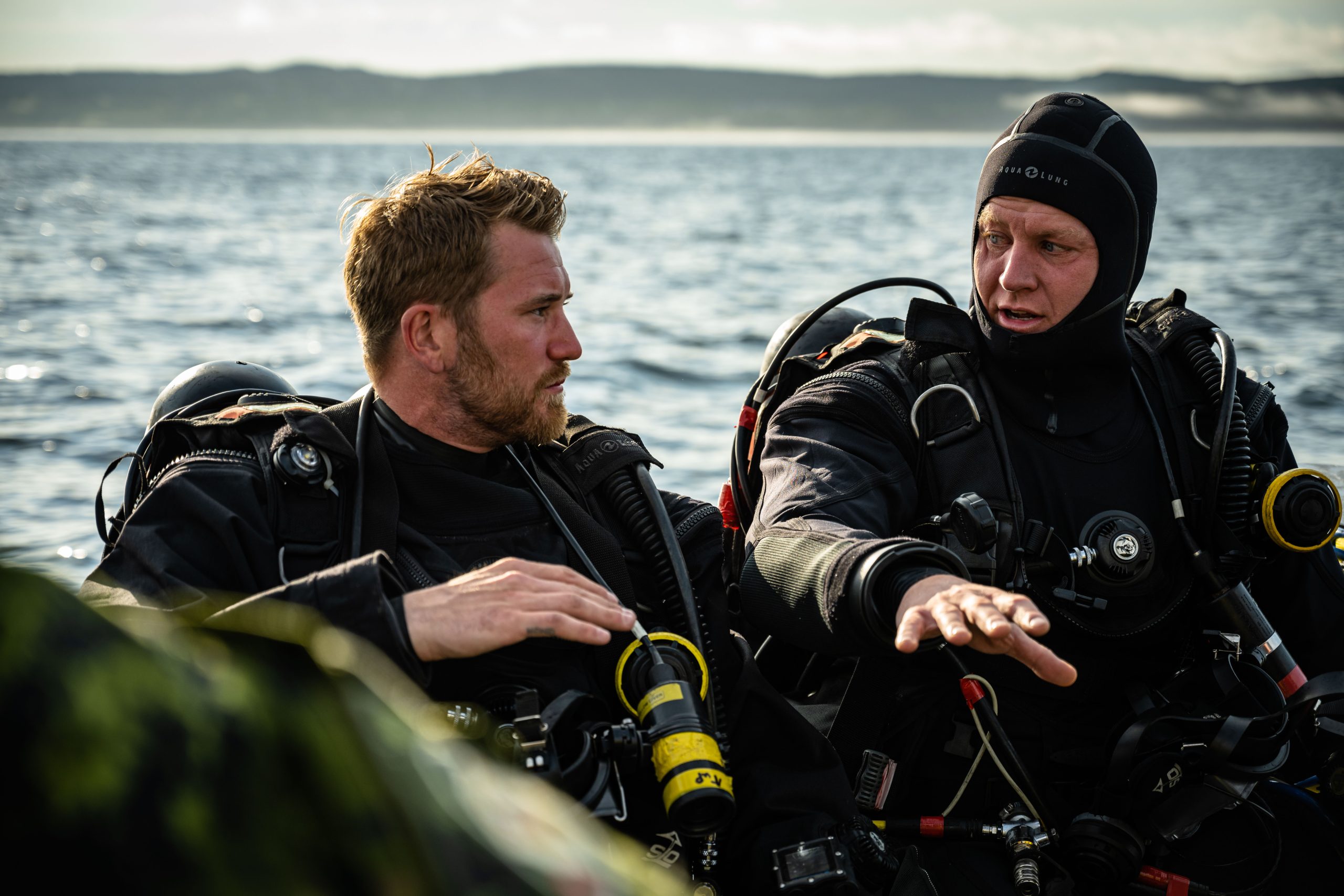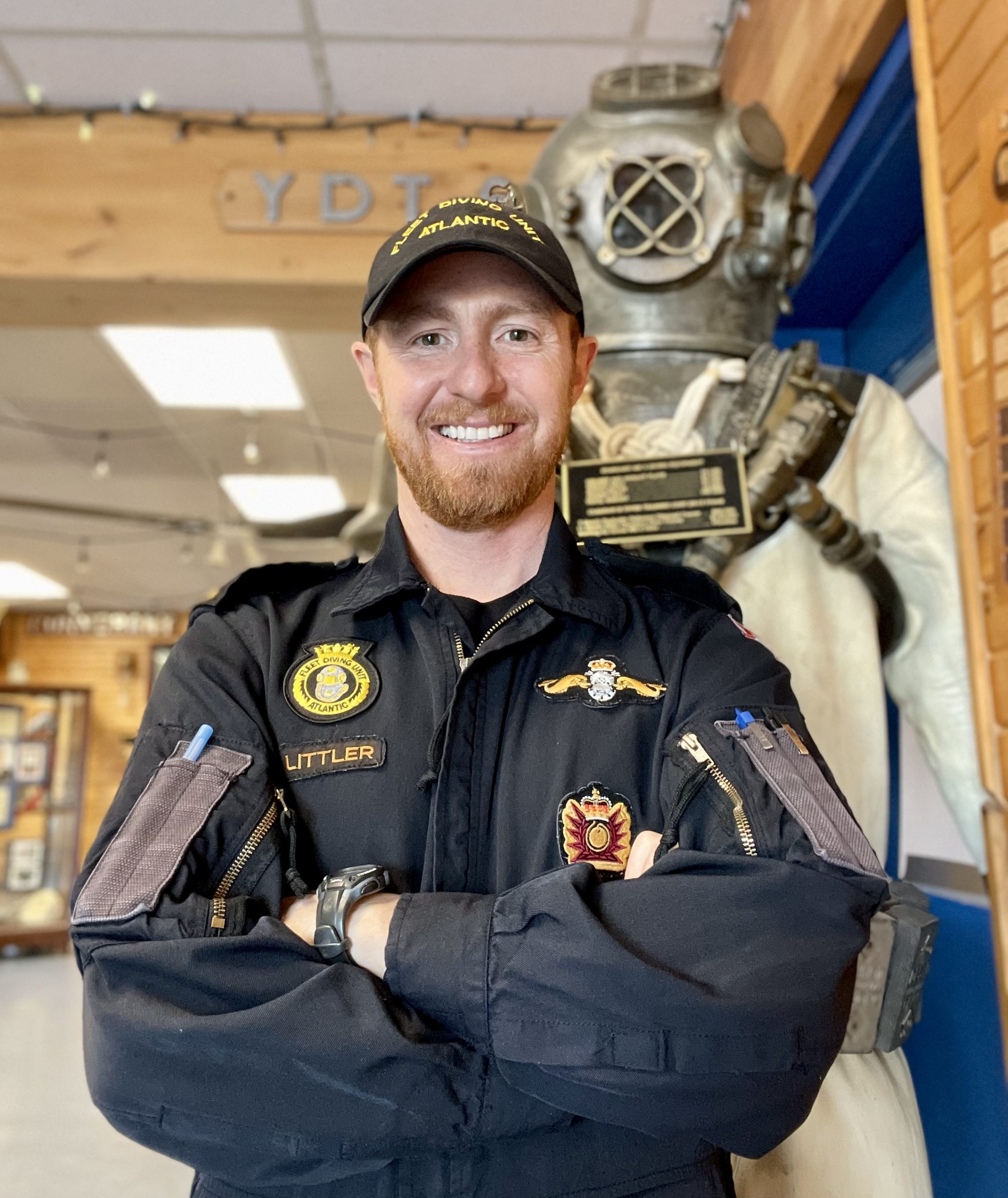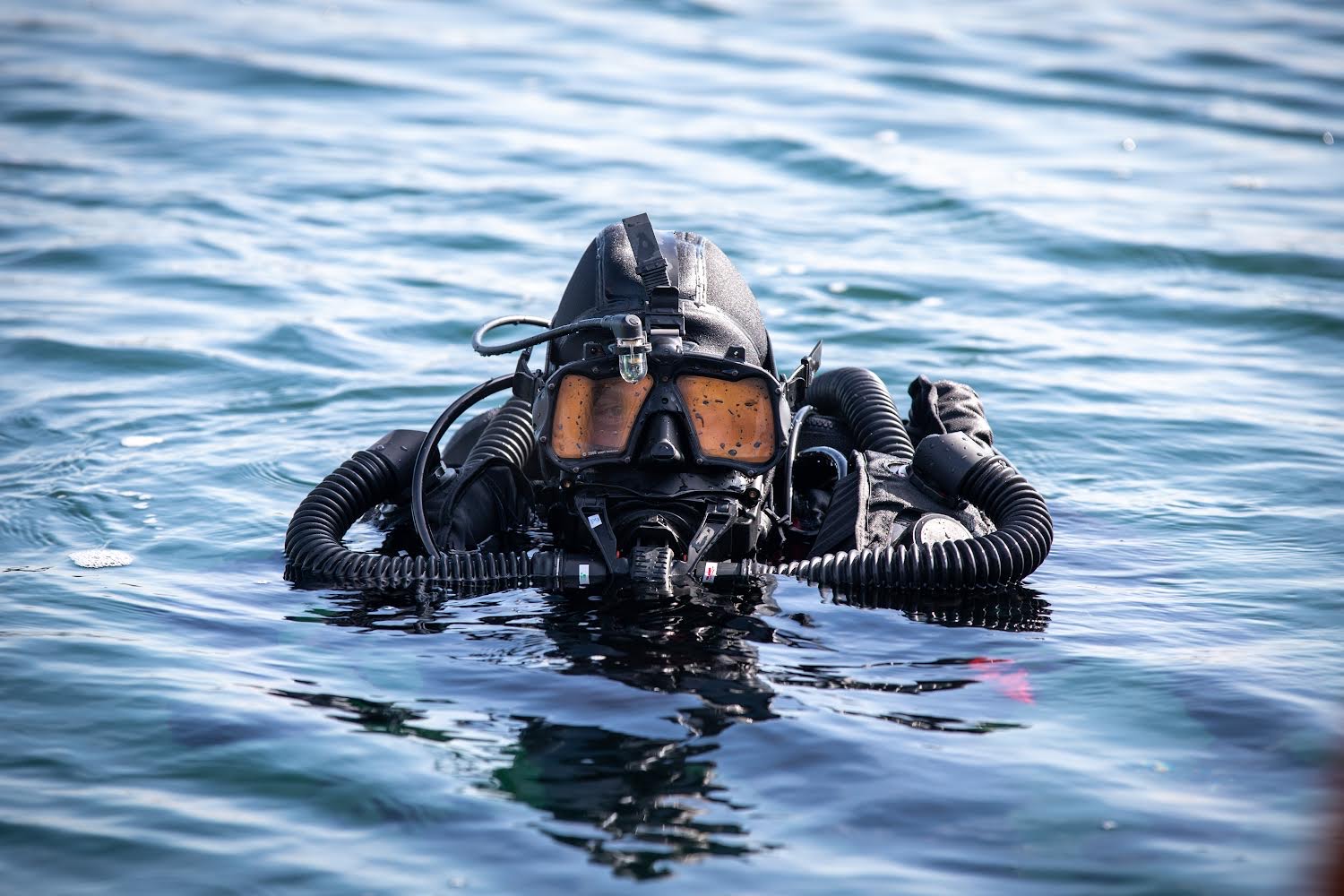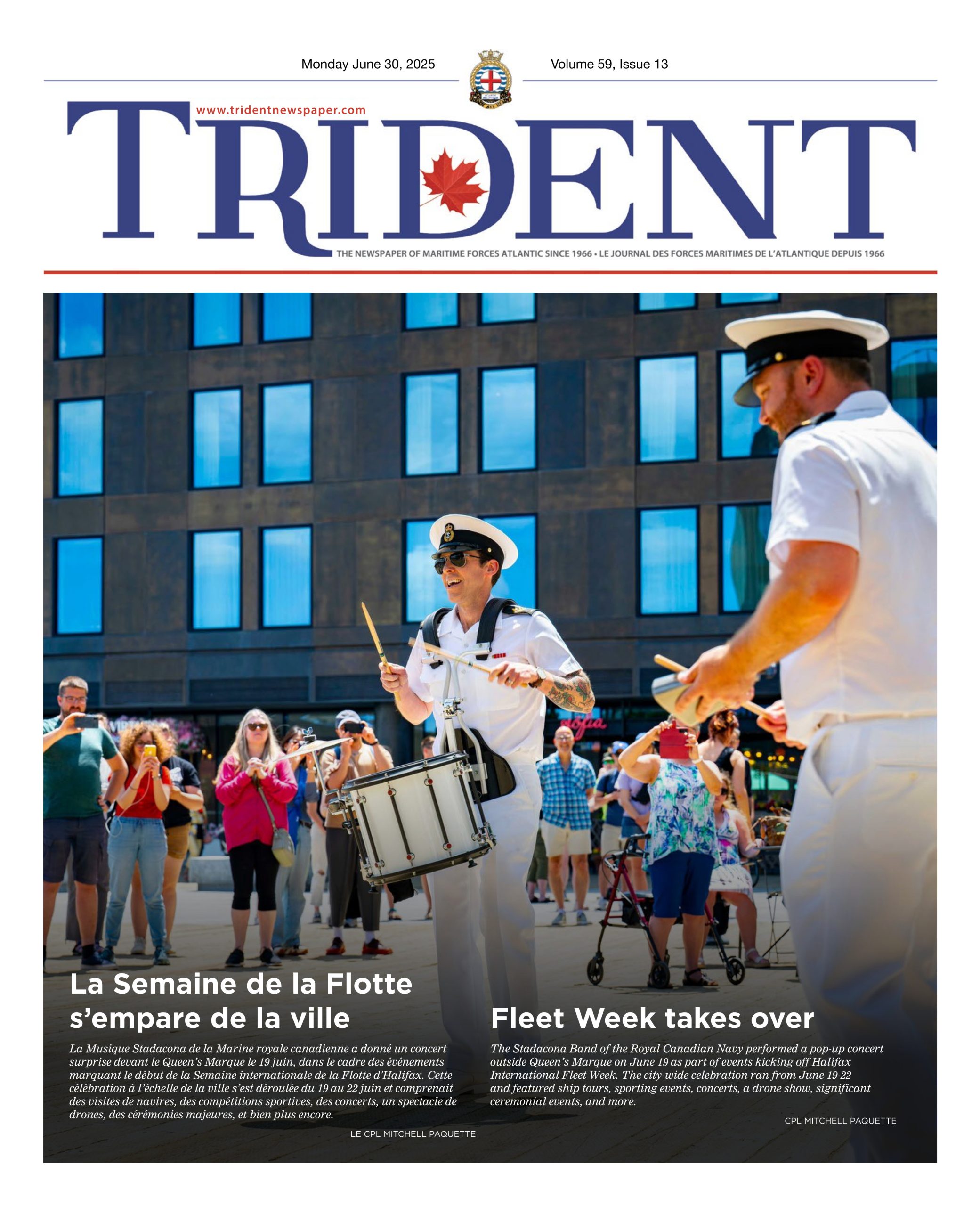
SUBMITTED
Recruitment campaign underway for ‘The best job in the Navy’
By Joanie Veitch,
Trident Staff
When asked what he loves about his job, Master Sailor (MS) Mark Littler, a clearance diver at Fleet Diving Unit (Atlantic) (FDU(A)), doesn’t skip a beat.
“It’s the best job in the Navy. Diving is just incredible,” he says. “It’s a whole other world under there.”

SUBMITTED
MS Littler has worked as Royal Canadian Navy Clearance Diver for the past ten years. A former Naval Combat Information Operator (NCIOP), he took his first dive course back in 2009 and found his true calling.
“As an NCIOP, I’d enjoyed sailing, but I didn’t really like sitting at a console in the ops room all the time,” he says. “Being able to go out there and do what we do every day, every week, every month… It’s a blessing. Every day is interesting.”
MS Littler is heading up a recruitment campaign to get more people applying to the trade from across the Canadian Armed Forces. The application process is open to all regular and reserve force members.
In recent years the clearance diver trade has seen a decline in numbers, due to a large number of retirements and the challenge of recruiting in a COVID-19 environment. Part of the problem, MS Littler says, is a lack of knowledge about the trade outside the Navy.
“Within the RCN, people know what we do, but across the rest of the CAF our trade is largely unknown. A big part of what this campaign is about is getting the word out that we’re looking for new recruits.”
The application process is open to all CAF members, no matter their trade or experience — a change from past years when applicants had to already be certified as either a ship’s diver or combat diver.
A highly-specialized and versatile trade, clearance divers handle mine detection and disposal, explosive ordnance disposal (including land-based bomb disposal as well as unexploed wartime military ordnance), underwater ship repair and force protection support.
Additional responsibilities include training all CAF divers, maintaining CAF diving and life support equipment, providing submarine search and rescue support, recompression treatment and carrying out salvage operations.
Becoming a Clearance Diver
After the initial application and screening process, potential candidates are invited to “selection”, where they are put through a variety of mentally and physically challenging exercises to determine if they have the right skills and abilities required for the job.
S1 Claire Bortolotti, a clearance diver with Fleet Diving Unit (Pacific), remembers how stressed she felt back in 2018, anxiously awaiting to hear whether she had made it through selection. “Finding out I was selected was exciting, and also a huge relief.”
A former paramedic, S1 Bortolotti knew she wanted to be a clearance diver even before she joined the military in 2014. To make sure she was in top physical condition, she worked out as much as possible, focusing on swimming and running.
“I worked with Personnel Support Programs (PSP) to develop a custom training plan, which was very beneficial,” she says.
With diving equipment weighing as much as 150 lbs, fitness is an extremely important part of the job, says MS Littler. “Working hard on the surface is one thing, but conducting exhaustive work underwater is another. Stamina and endurance are of the utmost importance.”

SUBMITTED
While top physical fitness is a must, being able to handle the mental component of the work is just as important — both for making it through selection and on the job, says S1 Aaron Clark, who joined the CAF as a combat engineer in 2015 and completed his clearance diver training last fall.
“You have to be good at problem solving,” he says. “Things don’t always go according to plan.”
S1 Kyle Groinus agrees. A clearance diver since 2014, he says having “mental toughness” is a crucial part of the work. “A lot of the time you’re in a situation where you don’t have outside resources available. You have to be able to handle that and keep going. You have to be able to manage yourself.”
After successfully making it through the selection process, clearance divers go through a rigorous year-long training program. Beyond learning about diving and how to operate the various apparatus and support equipment, the course offers instruction in a range of skills, including underwater demolition, basic explosive ordnance disposal, underwater welding and cutting, as well as navigation and small boat operation.
Both the West and East Coast diving units maintain a high operational tempo, with divers typically working in small teams of two to ten people. Deployments usually align with exercises and operations and are typically between two to six weeks.
Like S1 Clark, S1 Kyle Rondeau is a new clearance diver at FDU(A) and a former combat engineer turned clearance diver. He likes the diversity the trade offers, as well as how teamwork plays such a big role at the unit — both on and off the job.
“This is a small unit, which gives you so many opportunities to try different things… and we all spend a lot of time together and feel like part of a team. Every day you’re doing something different,” he says.
A Canada Forces General Message (CANFORGEN) memo will be released in July with information on how to apply to be a clearance diver. For more information about the clearance diver trade , email: GoClearanceDiver@forces.gc.ca.





